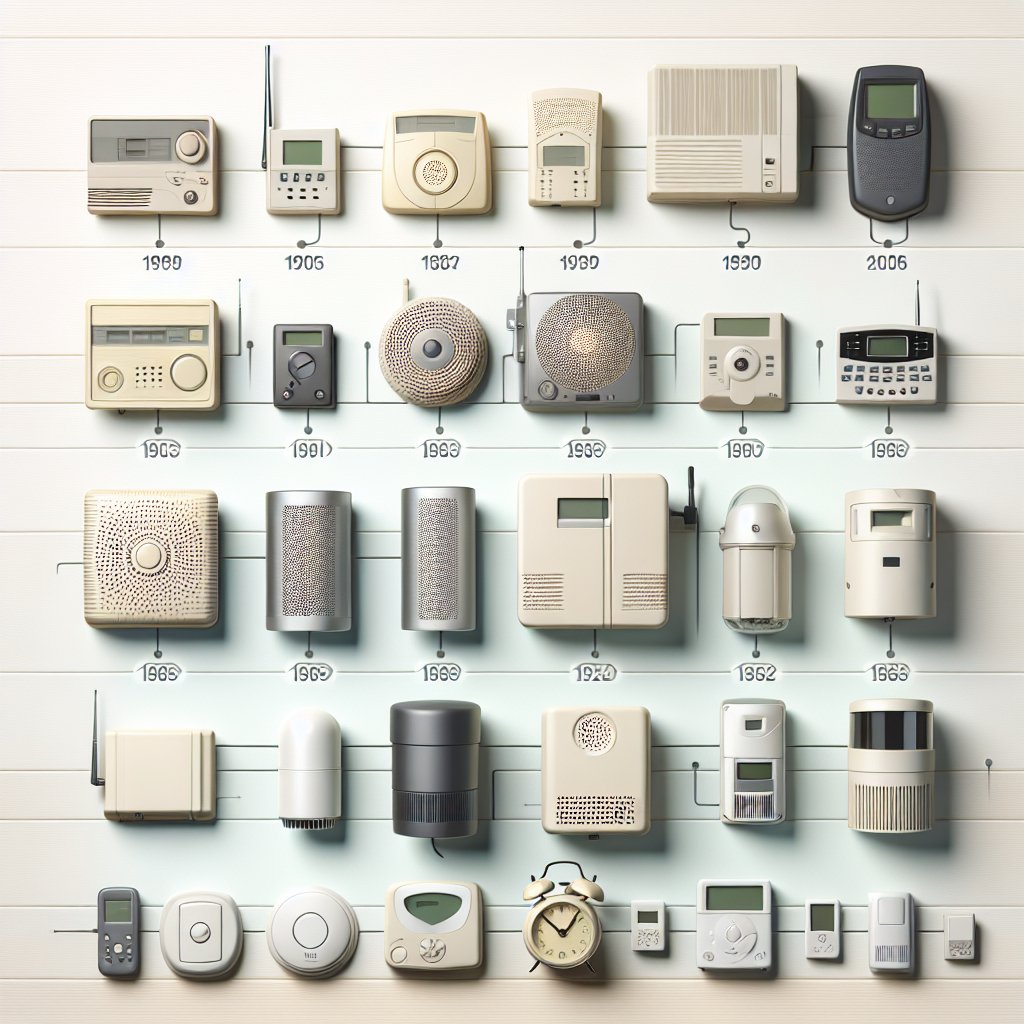The evolution of alarm systems in residential and commercial security has been a fascinating journey, reflecting advancements in technology and changes in societal needs. From simple mechanical devices to sophisticated smart systems, alarm technology has transformed significantly over the years. This article explores the history, development, and future of alarm systems, highlighting their importance in safeguarding homes and businesses.
Historical Overview of Alarm Systems
The concept of alarm systems dates back to ancient times when people used various methods to protect their property. Early warning systems included simple mechanisms like bells and horns, which would alert inhabitants of intruders or dangers. As societies evolved, so did the need for more effective security measures.
Early Alarm Mechanisms
In the 19th century, the first mechanical alarm systems emerged. These systems often utilized wires and bells to create a basic alert system. For instance, the invention of the electromagnetic bell in 1820 allowed for a more reliable means of signaling an intrusion. However, these systems were limited in range and effectiveness, often requiring a direct connection to a central location.
The Birth of Electrical Alarm Systems
The introduction of electricity in the late 19th century revolutionized alarm systems. In 1853, the first electric alarm system was patented by a man named Augustus Russell Pope. This system used a battery-powered circuit to trigger an alarm when a door or window was opened. The innovation marked a significant step forward, as it allowed for more complex and reliable security solutions.
Advancements in the 20th Century
As the 20th century progressed, alarm systems continued to evolve. The introduction of radio technology in the 1920s allowed for wireless alarm systems, which eliminated the need for extensive wiring. This development made it easier to install alarm systems in both residential and commercial properties.
By the 1960s, alarm systems became more sophisticated with the advent of motion detectors and infrared sensors. These technologies enabled systems to detect movement and trigger alarms without the need for physical contact. The integration of these features significantly improved the effectiveness of alarm systems, making them a popular choice for both homes and businesses.
Modern Alarm Systems: Features and Technologies
Today, alarm systems are more advanced than ever, incorporating a wide range of features and technologies designed to enhance security. The integration of smart technology has transformed how alarm systems operate, providing users with greater control and flexibility.
Smart Alarm Systems
Smart alarm systems are at the forefront of modern security technology. These systems can be connected to the internet, allowing users to monitor and control their security from anywhere in the world using smartphones or tablets. Features such as remote access, real-time alerts, and video surveillance have become standard in many smart alarm systems.
- Remote Monitoring: Users can view live feeds from security cameras and receive notifications about suspicious activity.
- Integration with Smart Home Devices: Alarm systems can be integrated with other smart home devices, such as smart locks and lights, to create a comprehensive security solution.
- Automated Alerts: Users can receive instant alerts via text or email when an alarm is triggered, ensuring they are always informed.
Advanced Sensors and Detection Technologies
Modern alarm systems utilize advanced sensors and detection technologies to enhance security. These include:
- Motion Sensors: These devices detect movement within a designated area and can trigger alarms or notifications.
- Glass Break Sensors: These sensors can detect the sound of breaking glass, providing an additional layer of security for windows.
- Environmental Sensors: Some systems include sensors for smoke, carbon monoxide, and flooding, ensuring comprehensive protection against various threats.
Artificial Intelligence and Machine Learning
Artificial intelligence (AI) and machine learning are increasingly being integrated into alarm systems. These technologies enable systems to learn from user behavior and adapt to potential threats. For example, AI can analyze patterns in motion detection data to reduce false alarms and improve response times.
The Future of Alarm Systems
The future of alarm systems looks promising, with ongoing advancements in technology and an increasing focus on user experience. As security threats evolve, so too will the solutions designed to combat them.
Increased Automation and Integration
As smart home technology continues to gain popularity, alarm systems will likely become even more automated and integrated with other devices. This could lead to the development of fully automated security solutions that can respond to threats without human intervention.
Enhanced Cybersecurity Measures
With the rise of connected devices, cybersecurity has become a critical concern for alarm systems. Future developments will likely focus on enhancing the security of these systems to protect against hacking and unauthorized access. Manufacturers will need to implement robust encryption and authentication measures to ensure user data and privacy are safeguarded.
Personalized Security Solutions
As technology advances, alarm systems may become more personalized, allowing users to customize their security settings based on their specific needs and preferences. This could include tailored alerts, personalized monitoring schedules, and adaptive response protocols that consider the unique characteristics of each property.
Conclusion
The evolution of alarm systems in residential and commercial security has been marked by significant technological advancements and a growing understanding of security needs. From simple mechanical devices to sophisticated smart systems, alarm technology has transformed to meet the demands of modern society. As we look to the future, it is clear that alarm systems will continue to evolve, incorporating new technologies and features to provide enhanced security and peace of mind for users around the world.




